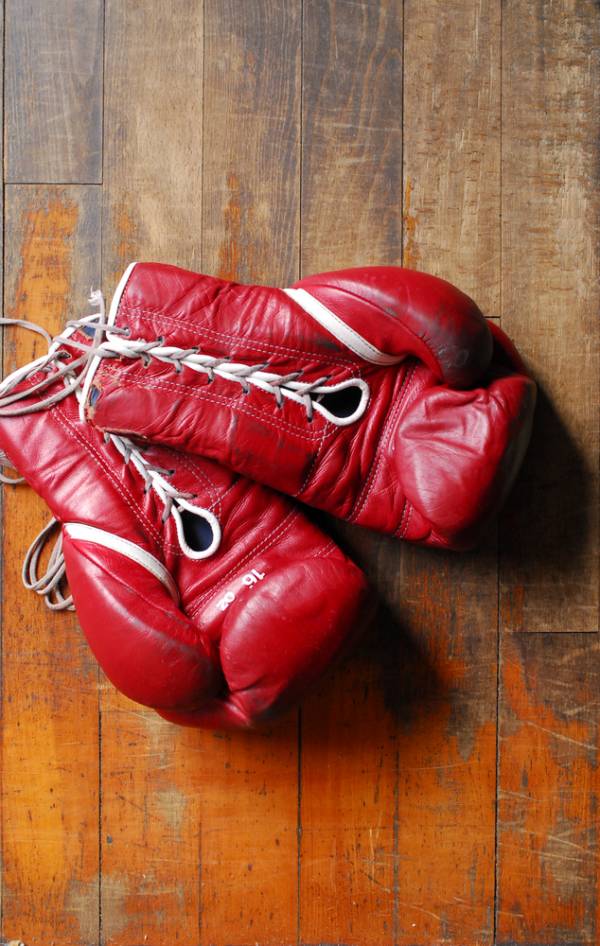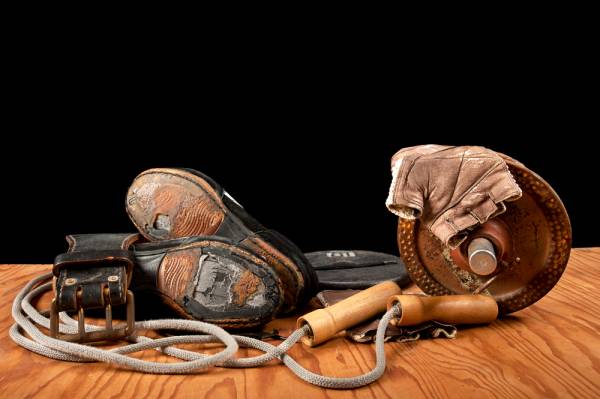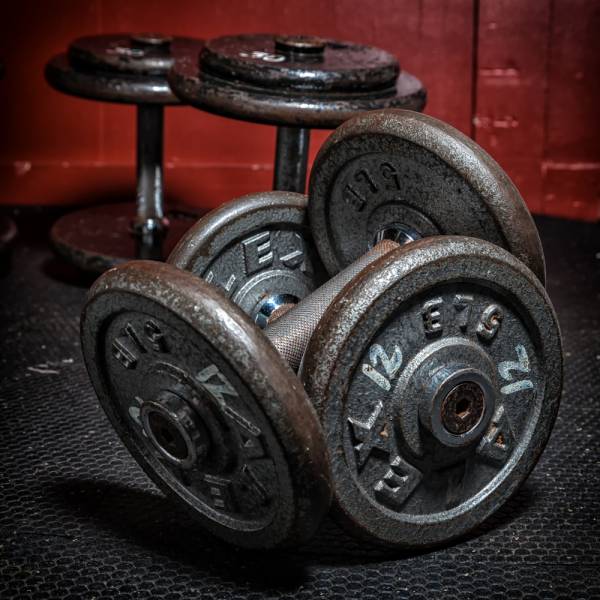I have always joked that if you looked in the dictionary under “old school,” you’d see a picture of my pop. My dad is a New Yorker and will call it like it is any day of the week. He isn’t politically correct and doesn’t mince words. He has had the same haircut for fifty years and looks the part of an old schooler. No fancy new fashion trends for my dad.
As a chip off of the old block, I always liked old school as well. I took to boxing many years back in part because it works on a simple old-school premise – hard work and sweat equity. It goes without saying that I have welcomed the old-school trend in fitness with open arms. That has been my own trend in fitness for years, both personally and professionally. And the trend of getting old school seemingly continues to pick up steam.
The Upside of Old School
The latest results from the ACSM’s annual survey on the hottest trends in fitness will surprise almost no one. The ACSM has done this survey for eight years running and conducts the survey by polling more than 3,800 fitness professionals nationwide. High intensity interval training (such as P90X and CrossFit), topped this newest list, along with old-school bodyweight exercises like push ups, sit ups, and pull ups. It’s about freaking time! No more prancercize and no more Zumba!
These days, old school reigns supreme in the gym, and it’s frankly somewhat surprising that old school is top dog given that we live in such a new-school era. By that I mean the “every kid gets a trophy” mentality and the age of digital media and instant gratification. Anyone who trains old school knows that not everyone gets a trophy and there is absolutely, positively no instant gratification. More like work, sweat, tears, and then, maybe, a bit of satisfaction. Oh, and the results of course.
 In general, I am a big believer in the old school. New school is pretending exercise can be, is, or should be fun. By “fun” I mean pleasurable with the intention of distracting yourself from the discomfort of exercise. Don’t get me wrong; I look forward to my exercise and get genuine satisfaction and contentment from it, but it ain’t fun. Old school is hard. There is no fun way to do a pull up. There is no fun way to run sprints. There is no fun way to spar in the boxing ring.
In general, I am a big believer in the old school. New school is pretending exercise can be, is, or should be fun. By “fun” I mean pleasurable with the intention of distracting yourself from the discomfort of exercise. Don’t get me wrong; I look forward to my exercise and get genuine satisfaction and contentment from it, but it ain’t fun. Old school is hard. There is no fun way to do a pull up. There is no fun way to run sprints. There is no fun way to spar in the boxing ring.
Same goes with our nutrition. New school is eating the latest diet food that comes right out of a box and believing we are healthier because the box (and the person who sold it to us) tells us it’s “healthy.” Old school is eating healthy by eating real and raw foods and more vegetables. The diet cheese puffs and healthy processed protein bar tastes better than spinach, but we ultimately know what is truly best for us.
The Downside of Old School
While I whole-heartedly believe in the no short cuts mentality, that same mentality also has a downside. That downside comes from one of the more dangerous words in the English language – denial. Denial is your worst enemy when it comes to your health, fitness, and wellness. Ironically, denial confronts both the hyperactive and the underactive. Denial is wanting to lose weight by having food that tastes good and exercise that is fun. But denial can also look like training when your body isn’t prepared, pushing too hard, and not being present with your exercise. Denial is getting lots of people hurt in the supposed name of health and wellness. What gives?
There has been a lot of publicity in recent months about these old-school fitness trends and whether some of them are inherently dangerous. The obvious and often-cited culprit is CrossFit, but functional fitness has also grown exponentially and is also in question. People aren’t just doing power cleans these days. They are doing everything from tactical fitness training to gymnastics. We’re not just talking about cops and soldiers doing tactical fitness either, we’re talking about weekend warriors. Soccer moms are now doing Spartan races and Tough Mudders. It isn’t just college athletes doing CrossFit workouts, but also plenty of corporate execs. Retirees are doing high intensity interval training. Good for them, right?
 Not necessarily. According to several investigative reports, including a recent piece in the Huffington Post, issues like rhabdomyolysis (the rapid destruction and breakdown of skeletal muscle) is increasingly common in activities like CrossFit. Even CrossFit founder Greg Glassman notoriously stated, “It can kill you. I’ve always been completely honest about that.”
Not necessarily. According to several investigative reports, including a recent piece in the Huffington Post, issues like rhabdomyolysis (the rapid destruction and breakdown of skeletal muscle) is increasingly common in activities like CrossFit. Even CrossFit founder Greg Glassman notoriously stated, “It can kill you. I’ve always been completely honest about that.”
Still, at the root of these injuries, aren’t really the exercises themselves. It’s not inherently dangerous to do a kettlebell swing. However, doing a kettlebell swing when you aren’t prepared to do one is inherently dangerous. The trick is to know yourself. Injury and the deterioration of our health comes from two ends of the movement spectrum – doing too much or doing too little. Those of us on the overtraining end of that spectrum are equally responsible to those who demonstrate laziness or fear of exercise.
I always assumed that my job and goal in fitness, boxing, and the martial arts was to push myself and get the most out of myself. Similarly, I always assumed my role as a coach and trainer was to get people to get more out of themselves by pushing them harder than they pushed themselves. Certainly pushing hard has merit, and thankfully no one has ever been hurt on my watch. That said, as we get old school, we have to ask ourselves a deeper question. What is the healthiest way to train?
Without question, tenacity, discipline, and having a conscientious work ethic are outstanding qualities, especially when it comes to getting and staying fit. However, throughout the years, and especially in recent years, I have come to learn these qualities can work against us. As an athlete, coach, and trainer, I have always despised the term, “I can’t.” I don’t like placing limits on the human body, or the mind for that matter. Bernard Hopkins recently became a world champion boxer (again), winning the IBF belt at age 48. But while I despise the words “I can’t,” I dislike arrogance even more. Throughout history, our greatest leaders and spiritual teachers have taught that growth comes not only from perseverance and the willingness to get uncomfortable, but also from humility.
 What we need in our newfound obsession with old school is a new way of approaching our health and wellness mentally. We need to be willing to look in the mirror and be introspective. Personally, I think old school is great. I am never stopping my old-school workouts, but as a 42-year-old, I also pick my spots these days. I have learned the hard way to be self aware, and now I try and adhere to some rules when it comes to getting my old school on in the weight room, boxing gym, or running trail.
What we need in our newfound obsession with old school is a new way of approaching our health and wellness mentally. We need to be willing to look in the mirror and be introspective. Personally, I think old school is great. I am never stopping my old-school workouts, but as a 42-year-old, I also pick my spots these days. I have learned the hard way to be self aware, and now I try and adhere to some rules when it comes to getting my old school on in the weight room, boxing gym, or running trail.
How to Go Old School Safely
- Examine your motives. Are you exercising to demonstrate qualities like determination and discipline? Are you looking to improve your athleticism and demonstrate grace and beauty? Or are you trying to beat Father Time and keep a body that merely looks a certain way, thinking somehow you are an exception to aging, injury, or pain?
- Respect your body with recovery. As athletes know, recovery is part of training, not just something we do when we’re injured. If you don’t have time for recovery (ice, heat, massage, acupuncture, myofascial release, stretching), then you don’t have time to exercise.
- Use pain as a guide. Pain is our greatest teacher. If we are willing to examine our mistakes, our injuries, and our pain, then we will grow, learn, and benefit.
- Age gracefully, not foolishly. This exact quotation was said to me by a man who was doing massage work on me about five years ago. I finally heard him about three years after the fact.
- Listen to your body. Your body tells you where you want and need to go. Find quiet time every day, especially before you exercise, to examine deeply how your body feels. No matter what the training schedule says, go with what your body says first.
References:
1. Hellmich, Nancy. “Top Fitness Trend. High Intensity Interval Training,” USA Today, October 25, 2013.
2. Robertson, Eric. “CrossFit’s Dirty Little Secret,” Huffington Post, September 24, 2103.
Photos courtesy ofShutterstock.






